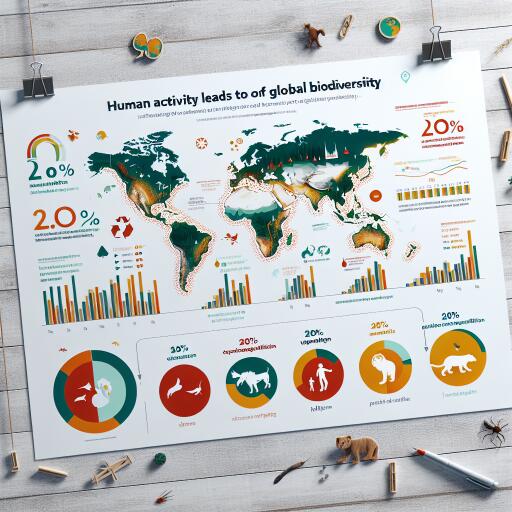
A recent study has highlighted a significant decline in global biodiversity, with the number of species in human-affected areas falling by nearly 20% compared to untouched sites. This comprehensive research, published in the journal Nature, utilized data from around 2,100 studies to analyze biodiversity across approximately 50,000 locations impacted by human activities and the same number of pristine reference sites. The analysis spanned all major organism groups and varied habitats globally.
The study underscored the profound and negative influence humans exert on ecosystems, affecting all living organisms and ecosystems worldwide. It identified five primary drivers behind this biodiversity loss: alterations in habitats, direct exploitation through activities like hunting and fishing, climate change, pollution, and the spread of invasive species. These human-induced pressures not only change the composition of biological communities but also lead to a significant reduction in biodiversity.
Species such as reptiles, amphibians, and mammals are notably susceptible to these changes, with vertebrates especially facing a heightened risk of extinction across all biogeographic regions due to their typically smaller population sizes. Meanwhile, microbes and fungi show the most rapid community shifts, likely owing to their brief life cycles and high dispersal capabilities, which enable swift responses to environmental changes.
This research represents one of the largest global syntheses of human impact on biodiversity, offering a clear depiction of these effects. The findings reveal an average 20% reduction in species variety in areas influenced by human activity. The extensive data show that both the number and types of species are being altered globally, resulting in significant biodiversity loss and transformed species communities.
Pollution and habitat destruction, such as through deforestation or the flattening of natural meadows, are particularly detrimental. These activities introduce harmful substances that can devastate local organisms, whether through accidental incidents like oil spills or deliberate actions such as the application of pesticides. The ramifications of such human influences are severe, sometimes suggesting potential collapses in species communities.
In alpine regions, for instance, rising temperatures are prompting high-altitude plants to be replaced by lower elevation species—a phenomenon known as the “elevator to extinction,” leaving these specialized plants with nowhere else to survive. This highlights the substantial threat climate change poses to specialized flora.
The study emphasizes the global threat to biodiversity and the urgent need for ambitious goals to mitigate this loss. Reversing the current trend of biodiversity decline represents one of society’s greatest challenges. The research draws attention to the importance of considering all forms of life, from plants and fungi to mammals and fish, when evaluating human effects on biodiversity across various scales.
While the findings may not surprise many, they reinforce what is widely known about the significant transformations humans impose on biodiversity worldwide. Changes lead to new and adaptive communities of plants, animals, and microbes that endure the often-harsh environments we create. The breadth and depth of this study provide valuable insights into the sustained effects of human activity and stress the importance of action to preserve biodiversity.





Leave a Reply